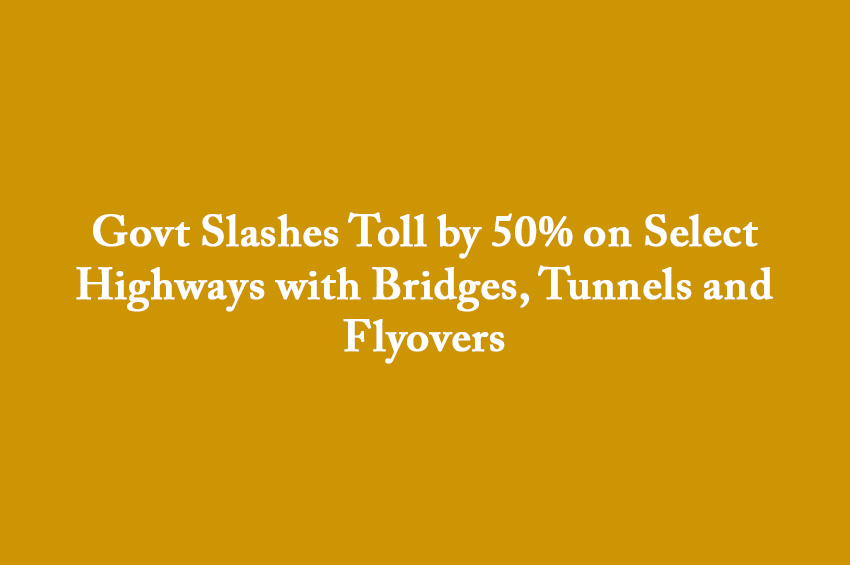Winning Bizness Desk
Mumbai. The central government has announced a major reduction in toll taxes on specific portions of national highways, offering up to 50% discount in charges. This significant change is applicable on stretches that feature major infrastructure components like bridges, tunnels, flyovers, and elevated roads. Travellers using such routes will now pay considerably less, easing the financial burden of highway journeys, particularly around urban bypasses and expressways.
What changes under the new rules
Under the previous norms, the toll calculation for stretches with special structures was based on a formula that inflated charges almost tenfold to recover construction costs. This led to disproportionately high toll rates on stretches with dense infrastructure. As per the revised formula issued by the National Highways Authority of India (NHAI), the toll will now be calculated using two methods—either by multiplying the length of the structure by ten or by multiplying the total stretch length by five. The lower of the two outcomes will be considered for final toll computation, thereby effectively cutting the charge by up to half.
Big savings for commuters and transporters
The change will particularly benefit daily commuters and commercial transporters who frequently use highways where more than half the stretch consists of such heavy structures. For example, the toll on Delhi’s Dwarka Expressway, which earlier stood at Rs 317, may now be reduced to approximately Rs 153. This will make logistics and intra-city connectivity more affordable and could have a downstream effect on the cost of transported goods.
Why the government made the move
According to officials, the primary aim is to reduce travel costs for road users. With infrastructure-intensive stretches often charging excessive tolls due to higher construction costs, the government felt the need to rationalize the fee structure. The change is expected to especially benefit users of bypass roads and ring roads built around major cities, where the percentage of bridges and flyovers is significantly higher.
Where and when this will apply
The revised toll structure is now in effect. However, it is limited to those national highway segments where more than 50% of the stretch consists of bridges, tunnels, or elevated roads. Regular road stretches without such structures will continue to follow the existing toll charges. The new system is already being implemented, with high-profile routes like Dwarka Expressway reflecting the reduced rates.
Key Pointers:
- Toll slashed by up to 50% on highway stretches with bridges, flyovers or tunnels.
- Applies only to roads where 50% or more length involves such infrastructure.
- New toll calculation to use the cheaper of two mathematical methods.
- Previous toll system charged up to 10 times more for infrastructure stretches.
- Commuters and goods carriers to benefit the most, especially on routes like Dwarka Expressway.
- Policy aims to reduce travel cost and make toll charges more rational.
- New toll rates are already in effect across applicable highway stretches.


